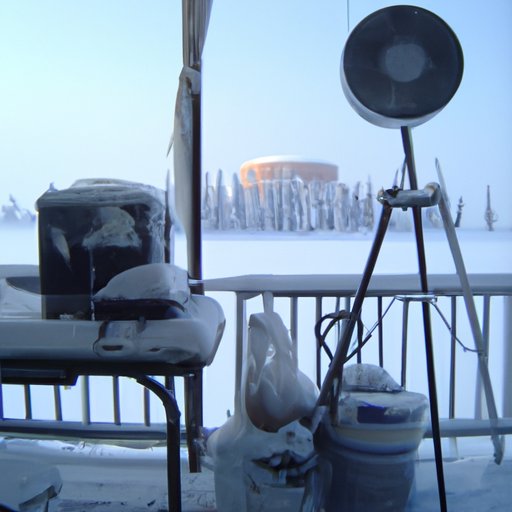Introduction
Alaska is known for its extreme winter weather conditions. With temperatures that can dip well below zero, the state is home to some of the coldest temperatures in the United States. But how cold does Alaska get during the winter months? In this article, we explore average winter temperatures in Alaska, potential causes of extreme cold, tips and advice for surviving an Alaskan winter, and unique adaptations to the Arctic climate.
How Cold Does Alaska Get During the Winter?
The average low temperature in Alaska during the winter months (December through February) is around -15°F (-26°C). However, temperatures can vary greatly depending on the region and elevation. For example, the interior of Alaska tends to be much colder than coastal areas, and higher elevations are typically colder than lower elevations. The coldest temperature ever recorded in Alaska was -80°F (-62°C) in 1971 at Prospect Creek Camp, located in the northern part of the state.
Causes of Extremely Low Temperatures in Alaska
The extreme cold in Alaska is caused by several factors. The state’s location in the far north makes it vulnerable to Arctic air masses that move south from the polar regions. Additionally, Alaska’s proximity to the North Pole means that it receives less direct sunlight than other parts of the country, leading to longer and colder winters.

Surviving an Alaskan Winter: Tips and Advice
The best way to survive an Alaskan winter is to prepare for the cold weather. Layering clothes is essential for staying warm and dry, as multiple layers will trap heat more effectively than one bulky layer. Additionally, it is important to wear waterproof boots and gloves to protect your feet and hands from the snow and ice. When dealing with snow and ice, use salt or kitty litter to provide traction and prevent slipping. Finally, it is important to prepare your home for cold weather by insulating walls and windows, sealing cracks, and wrapping pipes.

Impact of Extreme Cold on Life in Alaska
Extreme cold in Alaska presents many challenges for businesses and residents. Heavy snowfall can make roads impassable and can disrupt transportation and energy systems. Additionally, extreme temperatures can cause power outages and water main breaks. Health and safety considerations must also be taken into account when dealing with extreme cold. Hypothermia is a real risk, and precautions must be taken to ensure that people and animals are properly dressed and sheltered.

Exploring Adaptations to the Arctic Climate in Alaska
Despite the extreme cold, life continues in Alaska. Locals have developed unique building designs to keep homes warm in the winter. These include elevated construction to combat permafrost and double-paned windows to limit heat loss. Local foods and recipes have also been adapted to the Arctic climate, including dishes made with wild game, fish, and berries.
Conclusion
Alaska is known for its extreme winter temperatures. While the average winter low temperature in Alaska is around -15°F (-26°C), temperatures can drop much lower, even reaching -80°F (-62°C) in some places. There are several factors that contribute to the extreme cold, including Arctic air masses and the state’s proximity to the North Pole. To survive an Alaskan winter, it is important to take precautions such as layering clothes, wearing waterproof boots and gloves, and preparing your home for cold weather. Additionally, there are unique adaptations to the Arctic climate in Alaska, such as specialized building designs and local foods and recipes.
(Note: Is this article not meeting your expectations? Do you have knowledge or insights to share? Unlock new opportunities and expand your reach by joining our authors team. Click Registration to join us and share your expertise with our readers.)
